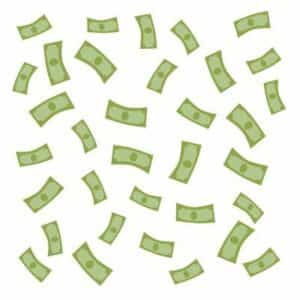 It’s that time of year when Spring is supposed to be here and at the same time, the Midwest and East Coast keep getting hit with snowstorms. Hopefully the Pineapple Express will have left the West Coast by now, dawning an official Spring. Every year, right around this time, I’m reminded of a conversation I had with my grandpa about the importance of rainy day funds. Granted, at the time, I thought he was being slightly dramatic and reminded myself that he is a product of the Great Depression. Of course he would have different views on saving, being that he was born and raised in Kansas right at the very beginning of the economic crash. Yet the more I think about it, the more it makes sense and the easier it becomes to save.
It’s that time of year when Spring is supposed to be here and at the same time, the Midwest and East Coast keep getting hit with snowstorms. Hopefully the Pineapple Express will have left the West Coast by now, dawning an official Spring. Every year, right around this time, I’m reminded of a conversation I had with my grandpa about the importance of rainy day funds. Granted, at the time, I thought he was being slightly dramatic and reminded myself that he is a product of the Great Depression. Of course he would have different views on saving, being that he was born and raised in Kansas right at the very beginning of the economic crash. Yet the more I think about it, the more it makes sense and the easier it becomes to save.
The thing with rainy day funds is that they really are only meant to be used in emergencies. What’s considered an emergency, you ask? It’s simple: Bey and Jay-Z announcing a 2018 tour is not an emergency, but unexpected slashed car tires is. Rainy day funds are meant to essentially bail you out of an unexpected situation with little to no inconvenience. They are also meant to be there for more serious situations where you’d need a few months’ expenses available instead of just enough to cover one small emergency. However, having an emergency fund (even if it’s a small amount) instead of not having one at all is always the better option.
Rainy day funds sound fine and dandy, but there is one small issue: self-control. Having an account with large funds on deposit may make it more tempting to go ahead and purchase the tour tickets since it won’t feel like it will be eating at your savings. A good solution would be to budget both a set amount to go into a traditional savings account and another set amount into a rainy day fund. This can be done a number of different ways (remember the envelope method?) but the easiest would be to open a second savings account specifically for rainy day deposits and have an amount automatically transferred from your checking account each month. You can even opt out of being issued an ATM card, forcing you to visit a branch to withdraw cash, making you really think if it is an emergency or not.
At this point in your life, rainy day funds may seem a little unnecessary and overkill, but it’s something to start thinking about. Life is unpredictable, and you might experience an emergency next year or even tomorrow. Having those funds available makes all the difference.
Enjoy the April Showers!
Luis Dominguez
Student Social Media Intern
1st Nor Cal Credit Union
